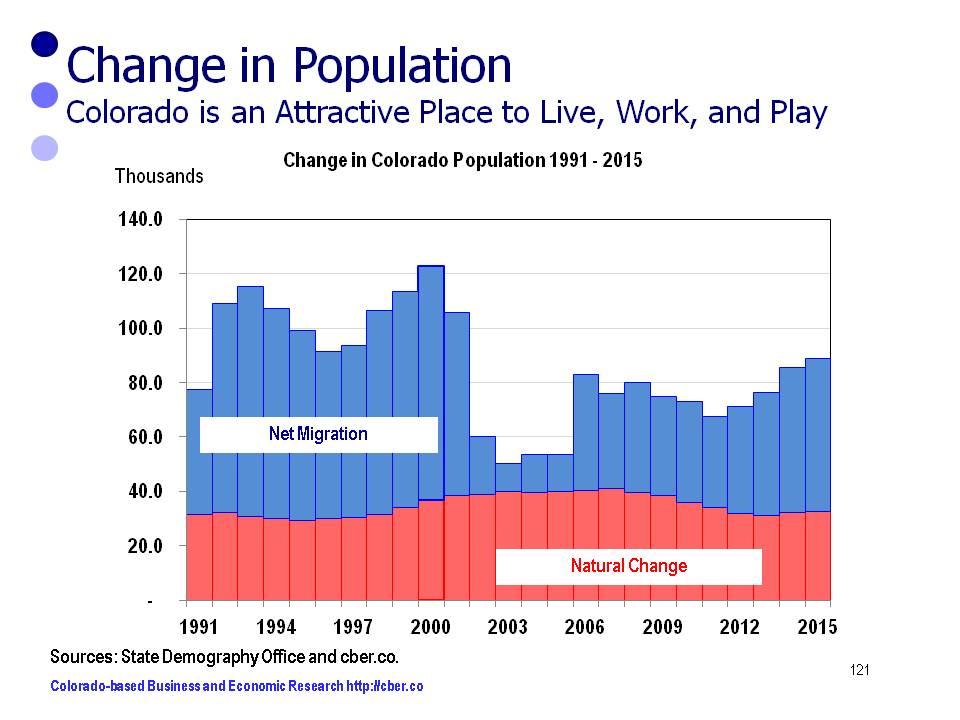The Colorado population increases and decreases are a result of the natural rate of change (births minus deaths) and the change in net migration (people moving into the state minus people moving out of the state).
Over the past two decades the natural change (red bars) varied from a low of 29,168 in 1995 to a peak of 41,124 in 2007.
Changes resulting from net migration (blue bars) are closely tied to the strength of the economy. For example, there were five years, from 1986 to 1990, when net migration was negative. More people moved out of state than moved into the state to escape a regional recession. During the past two recessions, net migration declined, but did not turn negative because it was difficult for people to move. Net migration remained positive.
The Colorado population increased by about 86,000 in 2014 and will increase by about 89,000 in 2015.
Net migration will increase by 56,000 in 2015, the highest level of change since 2001. In 2015 the state’s population will increase by 1.7% to 5.4 million.


